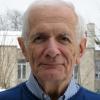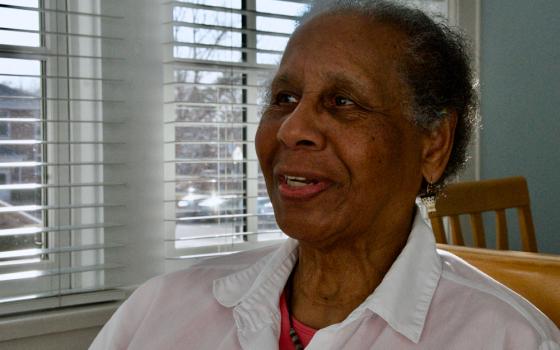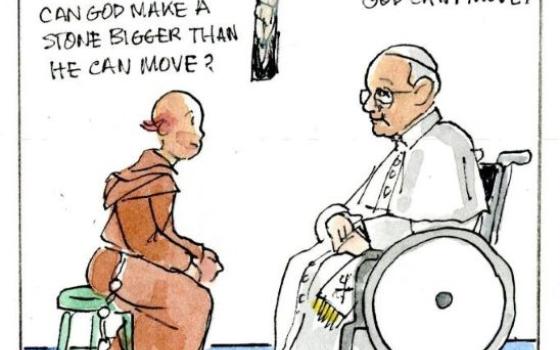
Viewpoint
There is stark irony in the words Pope Benedict XVI chose when he announced last February his plan to visit England this year and there pronounce John Henry Newman as among the “blessed,” just one step from canonization as a saint. He cited Newman as an example for all the world of opposition to dissent. “In a social milieu that encourages the expression of a variety of opinions on every question that arises,” said the pope, “it is important to recognize dissent for what it is and not to mistake it for a mature contribution to a balanced and wide-ranging debate.”
If Newman’s remains had not decomposed -- as Vatican investigators discovered when they attempted to dig up his coffin in 2008 seeking evidence of his sanctity -- he would have been spinning in his grave. For Newman was as singular a voice for responsible dissent and the rights of the laity as the Roman Catholic church has ever seen. He paid dearly for his convictions and was very nearly silenced or worse when he became embroiled in 1859 in a controversy over the development of doctrine.
The idea of development was not popular at the time, especially among the hierarchy. So Newman, using history to make his point, wrote about the Arian heresy of the 4th century. Twenty-five years before, he had produced a massive, scholarly history of the Arians and how they failed, despite a 50-year, emperor-supported campaign to impose as church doctrine the belief that Christ was not divine; rather, he was a most elevated, godlike being, but creature nevertheless. Now in a lengthy, pointed article, titled “On Consulting the Faithful on Matters of Doctrine,” Newman argued that the Arian position, shared by the overwhelming majority of the bishops and endorsed by at least one pope, did not become Catholic doctrine because a great mass of the laity along with a handful of priests and bishops resisted. Despite beatings, seizures of property and in some cases martyrdom, they refused, they dissented. They clung to the doctrine of the Council of Nicea, which, they were assured, had been discredited. Only at the First Council of Constantinople was the Arian position repudiated.
Belief in Christ’s divinity was maintained during the greater part of the 4th century, wrote Newman, “not by the unswerving firmness of the Holy See, Councils or Bishops, but … by the consensus fidelium [consent of the faithful]. On the one hand, I say, there was a temporary suspense of the functions of the Ecclesia docens [the teaching church]. The body of the Bishops failed in their confession of the faith. … There were untrustworthy Councils, unfaithful Bishops; there was weakness, fear of consequences, misguidance, delusion, hallucination, endless, hopeless, extending itself into nearly every corner of the Catholic church.”
To explain how such a thing happened (and could happen again), Newman relied on his own, well developed ideas about the “sense” and the “consent” of the faithful. Church teaching, he argued cannot be a top-down enterprise, a one-way street. It must be the result of a conspiratio, literally a breathing together of the faithful and the bishops. It is the first responsibility of the episcopacy and papacy, he said, to listen carefully before teaching doctrine.
And to what must they listen? Said Newman, “I think I am right in saying that the tradition of the Apostles, committed to the whole Church … manifests itself variously at various times: sometimes by the mouth of the episcopacy, sometimes by the doctors, sometimes by the people, sometimes by liturgies … customs, disputes, movements, and all those other phenomena which are comprised under the name of history. It follows that none of these channels of tradition may be treated with disrespect.” This is not to undercut the teaching authority of the bishops, insisted Newman; they must wade through all these sources. And, he added, of all the sources, “I am accustomed to lay stress on the consensus fidelium.”
Newman strove for most of his life as a Roman Catholic to open the minds of English Catholics, lay and clerical. In this he had scant success, living for most of his remaining years under a cloud of suspicion. At one point, he was labeled “the most dangerous man in England.” Then in Newman’s final days Pope Pius IX died and his successor, Leo XIII, removed the cloud by naming Newman a cardinal. It was at the Second Vatican Council that Newman found a larger measure of vindication. Theologians by then had embraced and expanded on his ideas of doctrinal development and the importance of consulting the faithful. The fingerprints of Newman can be found on many council documents, most notably the Dogmatic Constitution of the Church. Pope Paul VI went so far as to say Vatican II was “Newman’s council.”
The beatification of John Henry Newman now seems more a scandal than cause for celebration as those who are determined to rewrite Vatican II seek to enlist Newman in their misrepresentation. He will not join the movement.
[Robert McClory is a longtime NCR contributor. He is the author of Faithful Dissenters: Men and Women Who Loved and Changed the Church.]
John Allen will be filing reports throughout the Papal visit to the U.K. Sept. 16-19. Stay tuned to NCR Today for updates.




